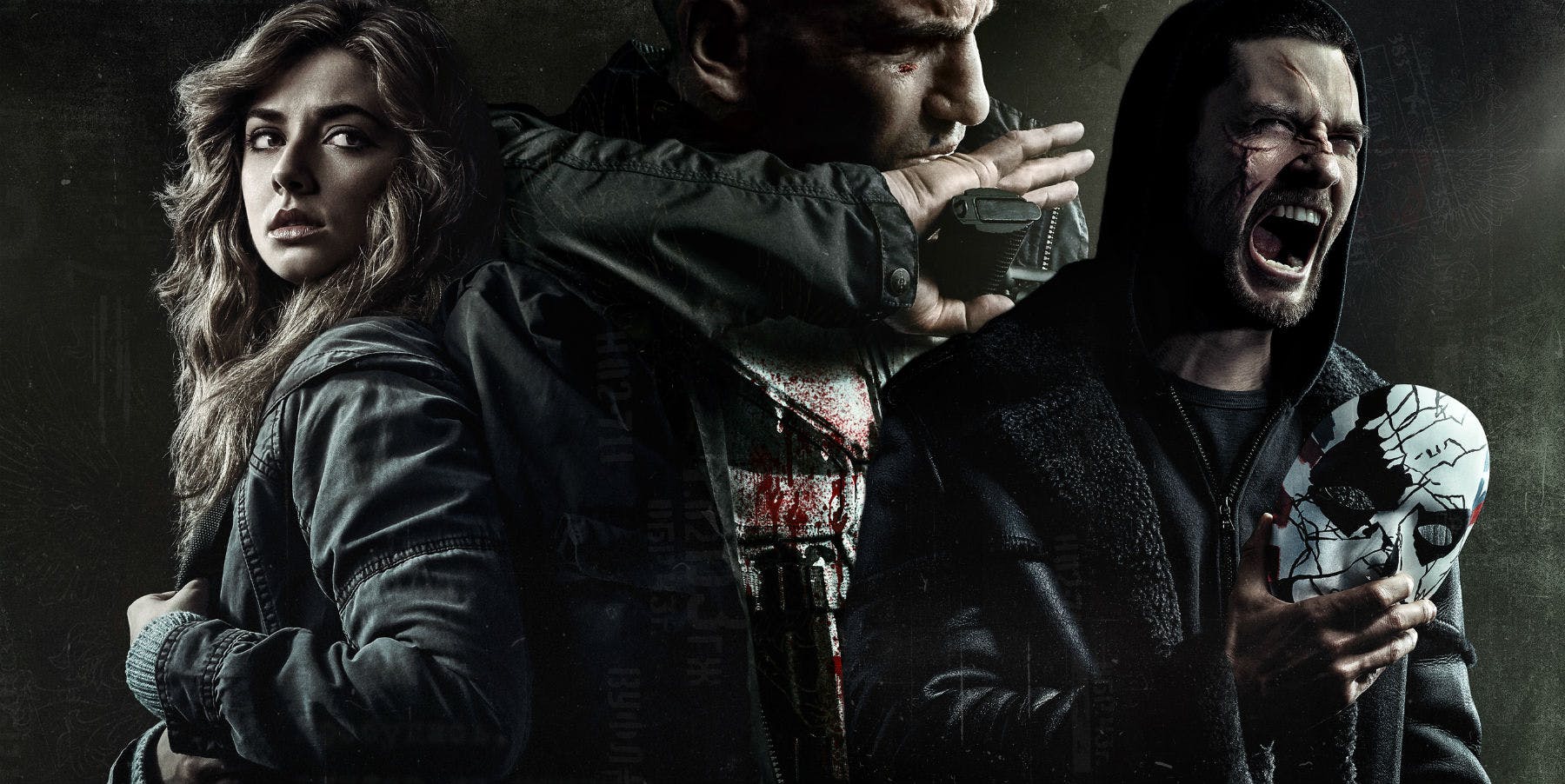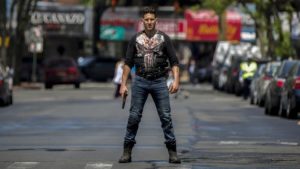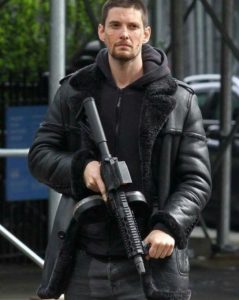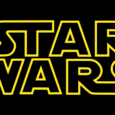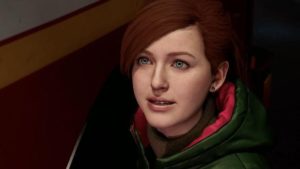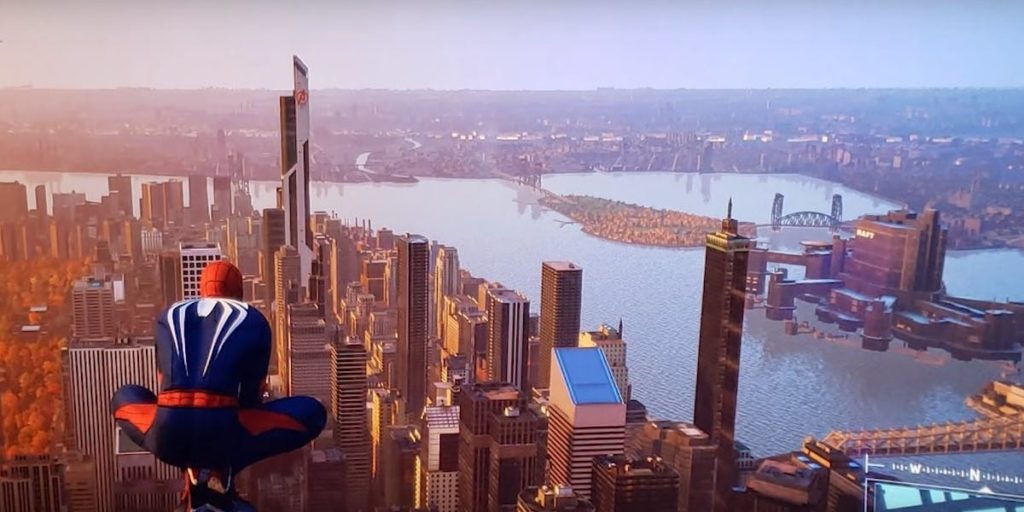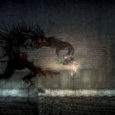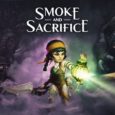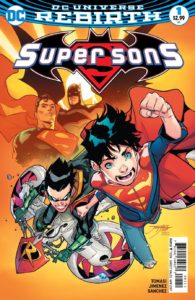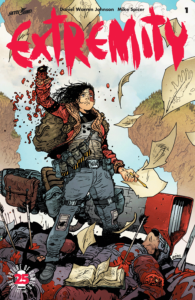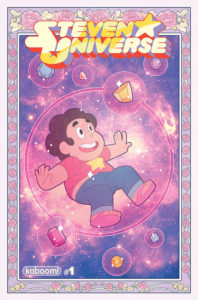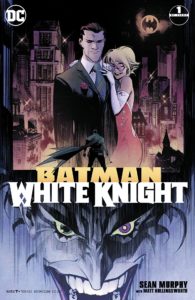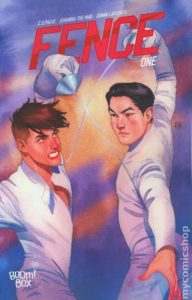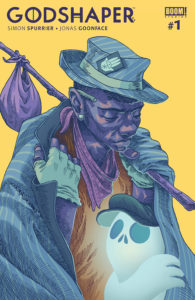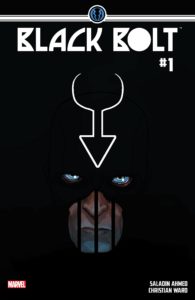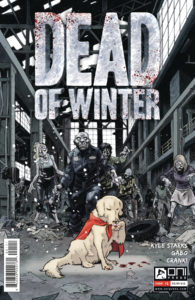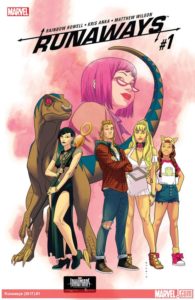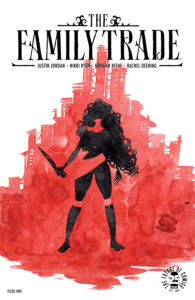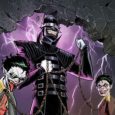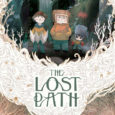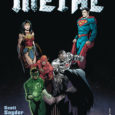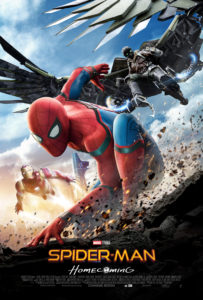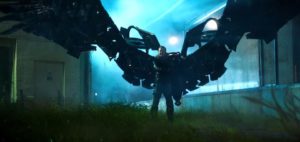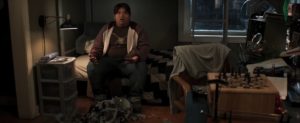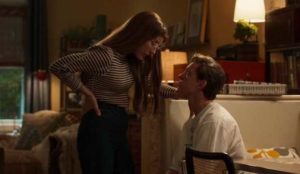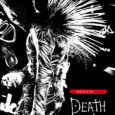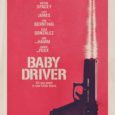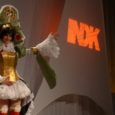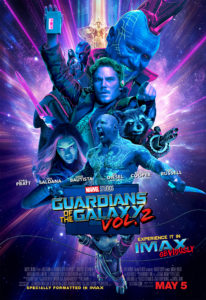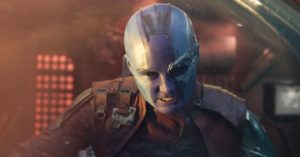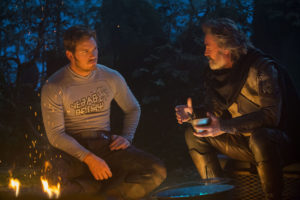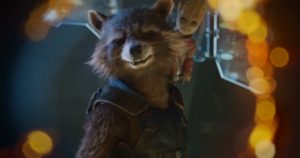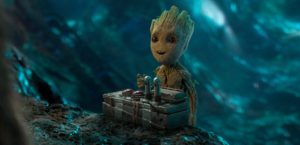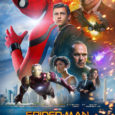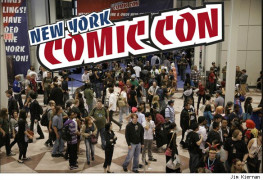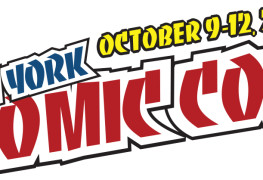Netflix’s Marvel series have all had their peaks and valleys, but nothing is more middle of the road than The Punisher. With all these titles seemingly being cancelled after their latest entries, the sands in the hour glass of our time with these characters is nigh. While The Punisher may never reach the lows of Iron Fist, it also never ascends to the highs of Daredevil, and the second entry into the series ends up being a mixed bag.
The Punisher Season 2 is much like the first season; yes, there is some good but it is balanced out with plenty of bad. While there is still much to enjoy, this 13 episode long series really only has about 6 episodes of interesting content. Why Netflix feels the need to elongate every one of their series and stretch things out to comical lengths is a bit strange. The moments that are good are great, wonderful even in some parts. But are these few moments worth all the fluff the viewer has to navigate through?
So what exactly is good, then? Well, there was enough material to keep me watching in about 2 or 3 sit downs… but in hindsight, I realize I did not have much else going on or things to get to. So, was the show keeping my interest, or was I just bored and willing to watch anything? It’s going to be a case by case basis with each viewer. The worth of the second season of The Punisher correlates to your investment in the ongoing (and soon to be closing) universe. However you end up feeling though, there is some great stuff here.
Jon Bernthal, and his portrayal of Frank Castle is tops. Jon embodies Frank in the same ways that Robert Downey Jr embodies Tony Stark. The casting is perfect here, and while that great casting does not extend to every character on the show., there are still some stand outs. Ben Barnes as Billy Russo/Jigsaw is also a great choice, and while his arc may be a bit too long in the tooth, its overall a good arc for a troubled villain. However, elements and reveals of his arc ground the high ambition concept of a villain going through memory loss and PTSD. Josh Stewart as John Pilgrim is outstanding as well. He is quite the presence but his story does not really take off until late in the series, and by then it can feel too late for some.
The action is also a stand out, there is way more hand to hand combat this time around, but that is not at the cost of some great gun focused scenes. The choreography is fantastic, and the visceral moments are some of the best stand out parts of the whole series. You get a good action scene at least once an episode, so it’s hard to feel like the action is pulled back or in reserves.
While the story can feel long, and some of the side arcs seem nonsensical, season two actually sticks the landing. It has a very satisfying ending and all of the lingering plot liens are tied up very nicely… almost as if they knew they were being cancelled. Many viewers will be happy to see a true and definitive ending to Frank Castle’s Netflix journey.
Sounds like plenty of positive to keep this moving forward, but there are still many criticisms to bring up.
Bringing back the homeland security officer, Dinah Madina, played by Amber Rose Revah, is within the top ten worst choices Marvel has made on any one of their properties. Why bring back this shallow, uninteresting, and logically dumb character? I have no answers for you, and neither does the show. There is, however, a new female character introduced this season, and The Punisher really stumbles as they fail to deliver on her personal arc or constructing an interesting character that elevates the ones around her.
The character in question, a therapist for Billy named Krista Dumont, played by Floriana Lima, whose sole purpose is to destroy the plots of other characters. At no point is Krista interesting or bring anything to the table, and it is hard to nail down this is solely due to a writing issue or an acting one. If I had to guess, it’s an issue with both. While she is not nails on a chalkboard bad in terms of acting, her scenes are not memorable and she does nothing to elevate the bad writing she is given. Hard to truly say who is at fault here.
Giorgia Whingham plays the young teen in distress that Frank saves. While she can act well, I found it hard to relate to her or her issues, however she was not near as annoying as I thought her character would be. This “badass-saves-the-little-girl” trope has been around forever, and in this it never reaches the highs of The Last of Us, or The Professional. Instead, her entire plot just treads water and never makes much progress, but hey she never truly gets in the way! There was so much more that could be done with her and her arc, and it’s like The Punisher just kind of gave up on expanding it.
The Punisher season two ends up being one of the worst representations of interesting female characters that Marvel has ever attempted. None of their arcs are realized, none realize their fullest potential, and none really offer anything to the most interesting parts of the plot, and that is a shame. Other Marvel entries don’t seem to suffer as badly from this, as Daredevil has Clair Temple and Karen Page, Luke Cage has Misty Knight, Iron Fist even has a great character in Jessica Henwick’s Colleen wing. The Punisher has… nobody. It is quite the shame.
There are other questionable casting decisions like Curtis Hoyle, played by Ebon Moss-Bachrach, is a mostly stellar character but sometimes becomes the role of Foggy to Frank. He acts like a moral compass despite his actions and support of Frank being to the contrary of this morality. In general, Curtis is an interesting character, but he ends up taking on a roll that is not exactly fit for the actions the script enlists him with.
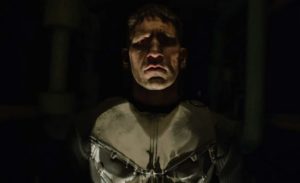 The Punisher Season 2 ends up being a hard one to recommend. I enjoyed most of my time with it, but I did feel like a hostage through most of its run time. I wanted to get to the good stuff, and knew the awesome things would rear their head…but I had to wade through a lot of bad to experience the small morsels of good. Despite the ongoing issues, I honestly think it is as good as the first season, but that is not really saying much as the first season was plagued with similar issues. This was its chance to go bigger, to go better, and instead the show just kinda showed up for its last lap before getting inevitably cancelled.
The Punisher Season 2 ends up being a hard one to recommend. I enjoyed most of my time with it, but I did feel like a hostage through most of its run time. I wanted to get to the good stuff, and knew the awesome things would rear their head…but I had to wade through a lot of bad to experience the small morsels of good. Despite the ongoing issues, I honestly think it is as good as the first season, but that is not really saying much as the first season was plagued with similar issues. This was its chance to go bigger, to go better, and instead the show just kinda showed up for its last lap before getting inevitably cancelled.
One thing is for sure through; Bernthal embodies the Punisher, and is absolutely outstanding in the roll. I just wish his supporting cast, and various arcs were more worthwhile then they ended up being, and because of these shortcomings the pace is where season two takes the biggest hit.
Go watch it if you are a completionist who wants to finish up everything Netflix Marvel has to offer, but skip it if you do not have a lot of free time to sit through hours upon hours of unrealized arcs, and narrative fluff.
Want more out from the underground?
The fastest way to hear more from us is to support our efforts by donating or get monthly perks by becoming a patron on Patreon!
Check out more of our reviews and let us know what you think on Facebook or Twitter @SubCultured! Don’t forget to join in the conversation on our Discord channel and let us know what you’d like to see next!
Got an idea for a future debate? Let us know what you want to hear by joining our Discord server!
Follow us on Facebook or tweet to us @SubCultured using the hashtag #MasterDebaters!
Spider-Man for the PlayStation 4 is one of the many games that have come out in the last few years that really validates your system purchase. This amazing game based off of many’s favorite Marvel super hero, is not only a system seller, but it may be one of the greatest superhero video games ever made; even rivaling the top dog, the Batman Arkham series. The Dark Knight got many things right with Arkham City, and Spider-Man took many pages out of the playbook of said series. While the ingredients will seem automatically familiar, the execution of these recognizable mechanics are masterfully implemented.
Spider-Man games have a polarizing legacy, and the quality of the games run the whole spectrum. With this entry we get one of the better experiences as Spider-Man that the gaming industry has ever had. Not only do we get incredible moments as the hero, but you will step into the shoes of costume-less Peter Parker, running his daily life, as well as Mary Jane, who is now a reporter for the Daily Bugle.
Being able to tell these more human sides of the story really build out the emotional narrative that is at play here. Make no mistake, this story goes to some heart pounding, and breaking, places. The narrative is elevated by interesting characters, some familiar, some entirely new.
The real stars are the incredible voice cast, Yuri Lowenthal as Peter Parker/Spider-Man, Laura Bailey as Mary Jane Watson, and Stephen Oyoung as Martin Li, to name a few. A story is only as interesting as its character, and characters are only as interesting as their voice actors. Take a breath of relief that Spider-Man is firing on all cylinders in these regards.
New York is always as big of a character as Spider-Man is, and this game delivers one of the best seemingly one to one creations of New York. Real and fictional locations alike are on full display here, with many of the fictional locations being some very awesome Easter Eggs. I don’t even want to spoil any of them here, besides the one we have seen in trailers, the Avenger’s Tower. The real magic is naturally finding out what’s hidden among the city, as I had plenty of moments where my fanboy jaw hit the floor when I found some greater Marvel Universe nods. There is a bigger world here just waiting to be explored in future sequels or spin offs. The possibilities of what could be are nearly endless. New York feels like a living breathing city, with plenty of NPC who love to walk up and interact with you. Giving pedestrians a high five and taking selfies with some fans never gets old, and it brings life to this open world map.
No open world game is equipped without side content and collectibles, and this is sadly where the game starts to show some of its shortcomings. There are 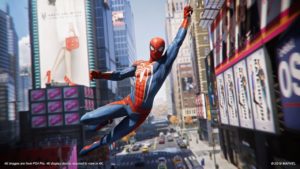 collectibles to acrue in the form of backpacks, which are very cool little tidbits of Peter’s past, and some excellent world building you can glean from the items. While those type are welcomed and don’t seem too intrusive, other collectibles are a bit of a grind, and come off as just fluff content. Collecting pigeons comes immediately to mind. While you get a good story with the quest giver, the act of collecting the birds themselves, leaves a lot to be desired.
collectibles to acrue in the form of backpacks, which are very cool little tidbits of Peter’s past, and some excellent world building you can glean from the items. While those type are welcomed and don’t seem too intrusive, other collectibles are a bit of a grind, and come off as just fluff content. Collecting pigeons comes immediately to mind. While you get a good story with the quest giver, the act of collecting the birds themselves, leaves a lot to be desired.
Side content also lacks variation. There are crimes to stop in each district of NYC, and while a cool concept in theory, there are only a few variations of these crimes. Ultimately you are just stopping a getaway vehicle, stopping a robbery, stopping a drug deal, or stopping a kidnapping. And every crime pretty much ends in fisticuffs. While these crimes lack variation, it is a minor complaint, as they are never boring to do because the mechanics are just so wonderfully executed.
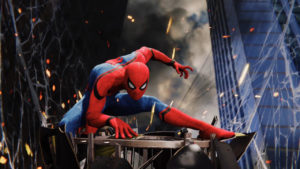 Speaking of mechanics, they are just about as perfect as can be. Swinging around New York has never felt better, and while it is easy to do, it take a bit of time to fully master. There are a lot of mechanics to be utilized while traversing the city, and as you gain locomotion through your countless moves and abilities you will find yourself swinging around at breakneck speeds. I have never felt more like Spider-Man in my life!
Speaking of mechanics, they are just about as perfect as can be. Swinging around New York has never felt better, and while it is easy to do, it take a bit of time to fully master. There are a lot of mechanics to be utilized while traversing the city, and as you gain locomotion through your countless moves and abilities you will find yourself swinging around at breakneck speeds. I have never felt more like Spider-Man in my life!
Our friendly neighborhood arachnid does hit the ground at some point though, and usually that means, hitting some bad guy face. Let me tell you all, hitting faces feels pretty damn good in this game.
So while we’re on the subject, let’s just address the elephant in the room. Spider-Man’s mechanics are heavily inspired (and heck, even borrowed) from the Arkham series. Some will think this is a rip off, but in reality, this is just a case of taking a great working combat system and retooling it for a new game. In Spider-Man, you are aiming to get your combo up as high as possible, why using reactive dodging in large crowds of bad guys. While multiplying your combo, you are filling up a focus meter which allows you to use instant take-downs. Also, the player can use a various amount of gadgets to crowd control the enemy. So yes, if this sounds like Shadow of Mordor or the Arkham games, you are right. But I have to point out that its this execution that makes the game so worthy. Though I concede to the point that others might feel like this is a reskin, I would encourage those who do to realize how perfect this combat system works for Spidey, and how it really nails his acrobatic nature and use of cool gadgets.
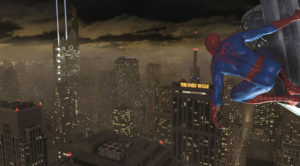 With such a cinematic story, you need a comparable cinematic score. The composer, John Paesano (known for his composition on the TV series Daredevil and The Defenders, and in video games with Detroit: Become Human and Mass Effect Andromeda) really nails all the right notes. He brings in so much immersion with his music, From the cheery tunes that play the moment you start swinging, to the more emotional moments that take place in cut-scenes, he really knows how to capture tone.
With such a cinematic story, you need a comparable cinematic score. The composer, John Paesano (known for his composition on the TV series Daredevil and The Defenders, and in video games with Detroit: Become Human and Mass Effect Andromeda) really nails all the right notes. He brings in so much immersion with his music, From the cheery tunes that play the moment you start swinging, to the more emotional moments that take place in cut-scenes, he really knows how to capture tone.
 Spider-Man on the PlayStation 4 looks great, but the real spectacle happen on the Pro. With great draw distances, crisp graphics, good looking character models, and a pretty consistent frame rate, it really makes for a beautiful experience.
Spider-Man on the PlayStation 4 looks great, but the real spectacle happen on the Pro. With great draw distances, crisp graphics, good looking character models, and a pretty consistent frame rate, it really makes for a beautiful experience.
Across my 30 hours of playtime, I only had 3 hard crashes which sent me to the blue error screen and ultimately back to my home PS4 screen. I also had one moment where my character fell through a building and I was stuck there until I reloaded a checkpoint. Listen, its an open world game. These types of things are going to happen in all of them, and while no one ever likes to see a game crash, I have played many monumental and titanic sized games that had much worse issues with performance. Some fare better than others and I would say Spider-Man is one of the better performing open world games at launch that I can think of in recent memories.
At this point, the PlayStation 4 is home to many must have exclusives, and you can add more more on the list…possibly near the top of the list, because this is one of the generation’s greats. After this year’s amazing God of War release, I was worried no other games would compare or even match up to it. Fortunately, Spider-Man maintains the quality of gaming that God of War showcased earlier this year, and while everyone has a personal favorite, I can see Spider-Man being a heavy contender for Game of the Year Awards.
Spider-Man is a must play experience, and with mechanics so tight, a story so unforgettable, and production so high quality, you would be doing yourself a serious disservice by skipping out. Did you enjoy Spider-Man? Notice anything we missed? Tell us about it on Twitter! Want more reviews out from the underground and into your feed? Find more at Sub Cultured!
The comics industry went through a lot of growth in 2017, some of it good and some of it bad. Through shifts in-universe, massive story events such as Marvel’s Generations and Legacy initiatives to DC’s Doomsday Clock, and questionable PR decisions from most of the big publishers, comics as a whole seemed kind of shaky.
Luckily, the year also saw a bevy of new and old voices, many of whom find themselves on our list of top comics of 2017. We left off ongoing series and chose to focus on new stories and creative teams, all of which you can find at your local comic store! In no particular order, here are our top 10 comics of 2017!
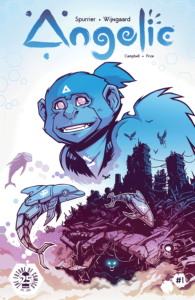 Angelic
Angelic
Art: Caspar Wijngaard
Super Sons
Extremity
Story/Art: Daniel Warren Johnson
Extremity is so damn special. Most issues leave me in my feelings, or swearing while holding my head in my hands, but it’s definitely one you MUST pick up. It’s Mad Max Fury Road meets Avatar the Last Airbender. It’s kinetic and brutal. I actually don’t want to say too much about it because it’s that good and I don’t want a single bit spoiled for you. Bonus: it’s only $10 for the first trade!
Steven Universe
Story: Melanie Gillman
Art: Katy Farina
Fans of the Cartoon Network show, rejoice! This ongoing series perfectly captures the voices of the characters and it’s episodic, meaning you can pick up any single issue off the shelf and have a complete standalone story. It’s great for little ones who may want to get into comics and hardcore show enthusiasts as well. There’s currently one collected softcover out too, just in case that’s your preference!
Batman: White Knight
Art/Story: Sean Gordon Murphy
Yes, I know a lot of you are tired of rehashed Batman stories featuring the same old formula of Batman beating up the bad guy and saving the city of Gotham. HOWEVER, the Batman: White Knight mini-series turns it all on its head in a refreshing, dark way. The series is about halfway through, but it makes a very big impression every issue. Be sure to pay close attention to those busier panels; Murphy tucks details in every corner. Issue #1 may be a little elusive to track down if you’re intent on a first printing, but it will definitely stay on your mind for a while after reading it.
Fence
Story: C.S. Pacat
Art: Johanna the Mad
If you need something to fill the Yuri!!! on Ice shaped hole in your heart, I can’t suggest Fence fast enough. As you may be able to infer, Fence is about a group of young fencers in a private school. There’s definitely going to be some drama, and there’s definitely going to be some romance. Granted, I have some bias as I love stories about tension filled high school slice of life experiences and I have a soft spot for fencing itself, so this was up my alley. Either way, if you enjoy attitude filled boys fighting with swords, check it out!
Godshaper
Story: Simon Spurrier
Art: Jonas Goonface
This was probably my favorite book out of 2017, if I had to choose one from this list. It’s also one of the hardest to try to summarize. In this universe, every person has a god assigned to them, usually bestowing some sort of skill or power. The story centers around Ennay, a queer “shaper” – which is to say, they change the shape of a person’s god. Those without a god are pariahs, like Ennay. It’s a fresh take and beautiful in every way.
Black Bolt
Story: Saladin Ahmed
Art: Christian Ward
This is another title where I have some bias, as I am a hardcore Inhumans fan. That aside, holy crow, please pick up a copy just to look at the art by Christian Ward. The man is a master as space psychedelics and his style is a pretty perfect complement to Saladin’s storytelling. Because Black Bolt can decimate everything ever if he so much as whispers, the dialogue can be a little light, but a glance into the inner workings of the Silent King is always pretty bomb.
Dead of Winter
Story:Kyle Starks
Art: Gabo
Dead of Winter is a popular survival horror board game where you have to complete scenarios and make tough decisions as randomized characters with different abilities. The comic it is based on takes these characters and runs with them in a free-for-all hilarious look at the end of the world. It’s a 4-issue series of pure fun, but I definitely think you’ll enjoy it more if you’ve played the board game! I almost always draw Sparky, a golden retriever who can withstand zombie bites, and there’s plenty of Sparky in this series, thankfully.
Runaways
I’ve missed The Runaways and they’re back in a perfect return of my favorite Marvel teenagers. While I wouldn’t start with this series because spoilers for the television show, I would suggest definitely, DEFINITELY, picking up the 2004 Brian K. Vaughan series first and going from there! Expect some angst because it picks up immediately where we last saw everyone. The creative team perfectly captures every single character and all their hang ups. Hmm, as I reach the end of this list, I realized most of these have some personal bias, but YOU KNOW WHAT, I READ A LOT OF COMICS AND I HAVE A LOT OF FEELINGS ABOUT THEM AND LIKE, 94 OF THEM ARE ABOUT THE GODDAMNED RUNAWAYS.
HONORABLE MENTION: The Family Trade
This is going to be a slow, delicious burn and I know those aren’t for everyone. That’s the only reason it didn’t make my top 10 list, but if you find yourself with a couple extra bucks, definitely pick up a really neat story about a family of assassins, particularly one clumsy one who finds herself in quite the pickle.
That wraps up my list, and it’s pretty varied if I do say so myself. I hope you find a couple of new favorites among them and feel free to tweet my way to discuss them (except Runaways cause inevitably I will CRY and that’s no fun for anyone!). Be sure to check out our other comics reviews and lists!
Well before the wide release of Spider-Man: Homecoming, early preview reviews started rolling out and proclaiming the film to be fantastic. I was a little worried that much of the hype was overblown; that the reviewers were overlooking the movie’s flaws just because they were happy to have Spider-Man as part of the Marvel Cinematic Universe. Granted, I had no reason to feel this way having not seen the movie, but that’s just the anxiety in me. After seeing Spider-Man: Homecoming, however, I realize just how silly this notion was.
For starters, Homecoming doesn’t get bogged down in an origin story. One of movie-goers’ biggest complaints is that the first film in every super hero series is an origin. Most often, it’s necessary to establish where the character comes from. Sometimes, a movie is directed well enough that the audience doesn’t realize they’re watching an origin. For Spider-Man: Homecoming, there’s a quick scene recapping Peter Parker’s (Tom Holland) experiences in Berlin prior to his debut in Captain America: Civil War and how Tony Stark (do I even need to put “Robert Downey Jr.” here?) gave him his suit but that’s it. They make references to the spider that bit him but we never see it happen. Thankfully Marvel and Sony understood that audiences know how Peter became Spider-Man.
As a character, Spider-Man has always been about dichotomy, and Homecoming recognized that. Peter Parker is the timid, nerdy, powerless kid but he’s also the strong super hero who can do amazing things. In the movie, though, we see this power divide almost everywhere. Spider-Man wants t do more and help people on a grander scale but Tony Stark limits his abilities and keeps him grounded. Adrian Toomes, the villainous Vulture played by Michael Keaton, is a hard-working, blue-collar salvage worker whose life is threatened when a powerful government organization comes in and claims authority over his jobsite. We can understand his fear and need to do whatever he has to in order to provide for his family. (This was also a nice way to tie Homecoming into the MCU and the events that transpired in Avengers.)
Spider-Man: Homecoming also places a lot of focus on Spidey’s supporting characters. Peter’s best friend, Ned (played by Jacob Batalon, who looks more like Ganke than Ned Leeds but I digress), gets almost as much screen time as Peter himself. School bully Flash Thompson (Tony Revolori) shows up often and is much more than a one-note trick than previous portrayed in the other movies. Even a character like Michelle has an abundance of screen time, but that’s to be expected when they put someone like Zendaya in that role.
All of this works to make Spider-Man: Homecoming feel like a true Spider-Man movie. Spider-Man has always been about the people around him. Seventy plus years of comics show us that Spider-Man became the hero he is because of his affection for his friends, and even his tormentors. Previous cinematic versions of Spidey never really got that ideal, or at least never expressed it as well as Homecoming did.
One of my biggest complaints about Homecoming is the way it handled Peter Parker. As the quiet, nerdy kid, Peter either gets picked on or ignored. He lives with his elderly Aunt May, who no doubt maintains her household while living on a fixed income. Peter feels that financial crisis and decides to help carry the burden. However, in Homecoming, Peter isn’t like that. Sure, he gets picked on by Flash Thompson, but overall he has a few close friendships. His peers find value in his intelligence and every time they’re disappointed by him it’s through his own actions. Even Aunt May (Marisa Tomei) is younger and prettier than her other incarnations (which the movie doesn’t hesitate to joke about), which allows her to continue to provide for herself and her teenage nephew. Peter’s life in Homecoming isn’t that bad.
Being Spider-Man, however, sure as hell seems like it. Homecoming manages to show audiences just how much it sucks to be Spider-Man. He gets yelled at by the public for making mistakes. His actions cause massive damage to the neighborhood he lives in. He puts his life on the line to take down a threat when no one else will listen to him. Why?
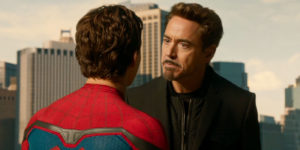 Clearly because “with great power comes great responsibility.” The beauty of Spider-Man: Homecoming is that we have a Spider-Man who understands Uncle Ben’s powerful message without having to beat audiences over the head with the phrase. Not once are those words uttered, but we see how much Peter values them. This all goes back to the lack of an origin story. Spider-Man knows when it’s time to do the right thing; whether it’s from the life lesson he learned off-screen from his Uncle Ben or from being mentored by Iron Man himself is irrelevant. It’s a notion that’s inherent in this version of Spider-Man.
Clearly because “with great power comes great responsibility.” The beauty of Spider-Man: Homecoming is that we have a Spider-Man who understands Uncle Ben’s powerful message without having to beat audiences over the head with the phrase. Not once are those words uttered, but we see how much Peter values them. This all goes back to the lack of an origin story. Spider-Man knows when it’s time to do the right thing; whether it’s from the life lesson he learned off-screen from his Uncle Ben or from being mentored by Iron Man himself is irrelevant. It’s a notion that’s inherent in this version of Spider-Man.
There’s lots of things to enjoy about Spider-Man: Homecoming; all of the excellent performances of the cast, most notably by Holland and Keaton, the return of Jon Favreau as Happy Hogan in a true supporting role, and all of the small throwbacks and references the filmmakers added. Overall, what I liked about Homecoming is that this is the closest a movie version of Spider-Man has ever gotten to its comic book roots. The young Peter Parker/Spider-Man has a lot to learn, not just about being a hero but about life in general. They’re not fast forwarding through his growth but allowing audiences to experience it first-hand, which is the most exciting part of the story.
Grade: A
San Diego Comic Con is just about a month away and there’s a ton of stuff that we’re excited to see come out of the show, like the big announcements from all of the major movie and TV studios and comic book big (and little) shots. However, one of the major draws to the West Coast mecca for geek culture is the exclusive toys that are available at the show.
Over the last couple of weeks, Funko, the purveyor of fine Pop! vinyls, has announced their lineup of SDCC exclusive figures. We have compiled everything right here for you so you can decide before you go which ones you can’t live without (or salivate over the exclusives you’ll need to hunt down on eBay if you can’t make it to San Diego).
Back in 2014, the world was shocked to find itself entertained by a hard sci-fi comic book movie with a main cast that featured a talking raccoon and a giant tree. Three years later, audiences eagerly anticipated the sequel to that film and here we are, talking about Guardians of the Galaxy Vol. 2. But does the second film live up to the expectations set by the first?
Guardians Vol. 2 opens on the team, composed of Star-Lord (Chris Pratt), Gamora (Zoe Saldana), Drax (Dave Bautista), Rocket (voiced by Bradley Cooper) and Groot (voiced by Vin Diesel), facing off against a pink, undulating, multi-tentacled creature at the behest of a race of beings called the Sovereign. It’s a fun scene that helps set the tone of the film and reminds audiences that they’re in for a good time.
The casting of Guardians of the Galaxy Vol. 2 is definitely one of the films’ strong points. In addition to our core line-up, we are introduced to a few new characters. The first is Ego, played masterfully by Kurt Russell. We learn that Ego is Star-Lord’s father (not a spoiler) and wants to reconnect with his son (possibly a spoiler, if you couldn’t have deduced that yourself). Russell has such a great on-screen presence that he’s a joy to watch as Ego. He exudes charm in such a way that you believe him to be Star-Lord’s father; there’s no denying these two are cut from the same cloth.
The idea of “Family” is a main theme in this movie. They touched on this a bit at the end of the first film, where the cast begin to see themselves as a makeshift family. This time, with Star-Lord meeting his father, they elevate the theme. But we also see it with Gamora and Nebula (played by Karen Gillan), a pair of sisters who were always at each others’ throats. In Vol. 2, they spend more time together and begin to understand each other better. Also, Baby Groot exemplifies the theme of “Family.” Literally a toddler, Groot has an attachment to each of the Guardians, and in turn they treat him as if they were his adoptive parent. It’s very sweet in the way it’s handled.
We also meet Mantis, Ego’s handmaiden. As a full-fledged Guardian in the Dan Abnett/Andy Lanning comic book series, it’s no surprise to learn that Mantis would eventually join the team. Played by Pom Klementieff, Mantis was fun to watch on screen. Her ability to feel the emotions of other by touching them made for a few humorous moments, and though she served a purpose to the plot, I feel like her character was introduced to provide little more than that. That said, I’m happy to see her as part of the team and look forward to seeing more of her.
One character I didn’t quite get was Sylvester Stallone’s Stakar Ogord. Introduced early in the film, Ogord was used as a foil to Yondu (Michael Rooker), and shame him for his past transgressions. Ogord doesn’t make another appearance until the very end, at which point he’s given his very own post-credits scene that points to the character doing something more meaningful. Which makes sense considering they cast goddamn Sylvester Stallone in the role. Whatever it is that writer/director James Gunn has planned for him, I can’t even fathom. To me, his inclusion in the film felt shoehorned and overblown and I could have done without it.
With the exception of Star-Lord, who learns about his heritage, we don’t get a lot of development in the main cast. Some of their backstories are expanded on but it mostly feels like a retread of what we already learned about them in the first film. Instead, the secondary cast gets to step into the spotlight, as Gunn dives into the histories of both Nebula and Yondu. We get a peek into why Nebula resents Gamora so much. Concerning Yondu, we get to delve into his relationship with Star-Lord, which was touched upon a little in the first movie but Gunn really goes in depth here. It makes for a touching story but if you spend enough time thinking about it, it becomes downright unsettling
Guardians of the Galaxy Vol. 2 is dripping with sentimentality. Mostly it’s handled well; it doesn’t get overly dramatic, like Rocket’s reaction to Groot’s “death” at the end of the first film. However, given the emotions that are boiling over, Star-Lord reconciling with his father, Star-Lord’s confrontation with Gamora about their unspoken thing, and even Drax and his reminiscing about his wife and daughter, we see how despite all of their flaws, the Guardians remain human (a term used loosely given that 80% of them are aliens).
The first Guardians was impressively funny, probably the most humor-filled film in the Marvel Cinematic Universe. Rightfully, Vol. 2 manages to keep that vibe going, and they even upped the humor quotient this go around. I’m not trying to say they squeezed more jokes into the script, which, to be fair, they seem to have done. The tone of the humor was intensified, almost to the point of being cartoonish. A scene in which Yondu, Kraglin (played by the director’s brother, Sean Gunn), and Rocket make a jump to hyperspace really displays the ways James Gunn was willing to push the envelope. It works within the confines of this film, one which is willing to play around with the laws of physics, but it just seemed over the top and unnecessary. I think we’re willing to give Gunn the leeway to do things like this because his track record is relatively clean, but I hope he doesn’t press his luck too much.
One of the ways Gunn improved in the sequel is in the pacing. The first Guardians needed to build its world so some of the scenes felt longer than they should have, mostly because of the wordy exposition used to get the point across. Vol. 2, however, has pretty much established its rules, so the only wordiness is to expand character arcs. There were still quite a few wordy monologues but at least they didn’t feel as expository.
In regards to the composition of Vol. 2, Gunn uses the same formula as he did in the first one, which is the only main downside. We open with a scene from the past, cut to quirky musical intro credits, move into character intros, exposition, exposition, dramatic turn, final battle. There’s nothing wrong with working from the formula (that is, after all, how it became a “formula”), and at least Gunn manages to make this film feel different from its predecessor. If this becomes the norm, however, it could really bring down the series.
As part of the most offbeat series in the Marvel Cinematic Universe, Guardians of the Galaxy Vol. 2 could have gone in a number of directions but I’m pleased with where James Gunn chose to take it. Humanizing the cast was a great way to keep audiences connected with the characters. It was also great to see a few of the more underutilized characters from the first film get the chance to shine (while Baby Groot is the clear fan-favorite, Drax had a few pretty amazing moments). All in all, Guardians of the Galaxy Vol. 2 never lost sight of what everyone loved about its predecessor. While not perfect, it’s a fun movie that helps to elevate Marvel’s record in regard to sequels. I’m ready for the third one.
Grade: A-


